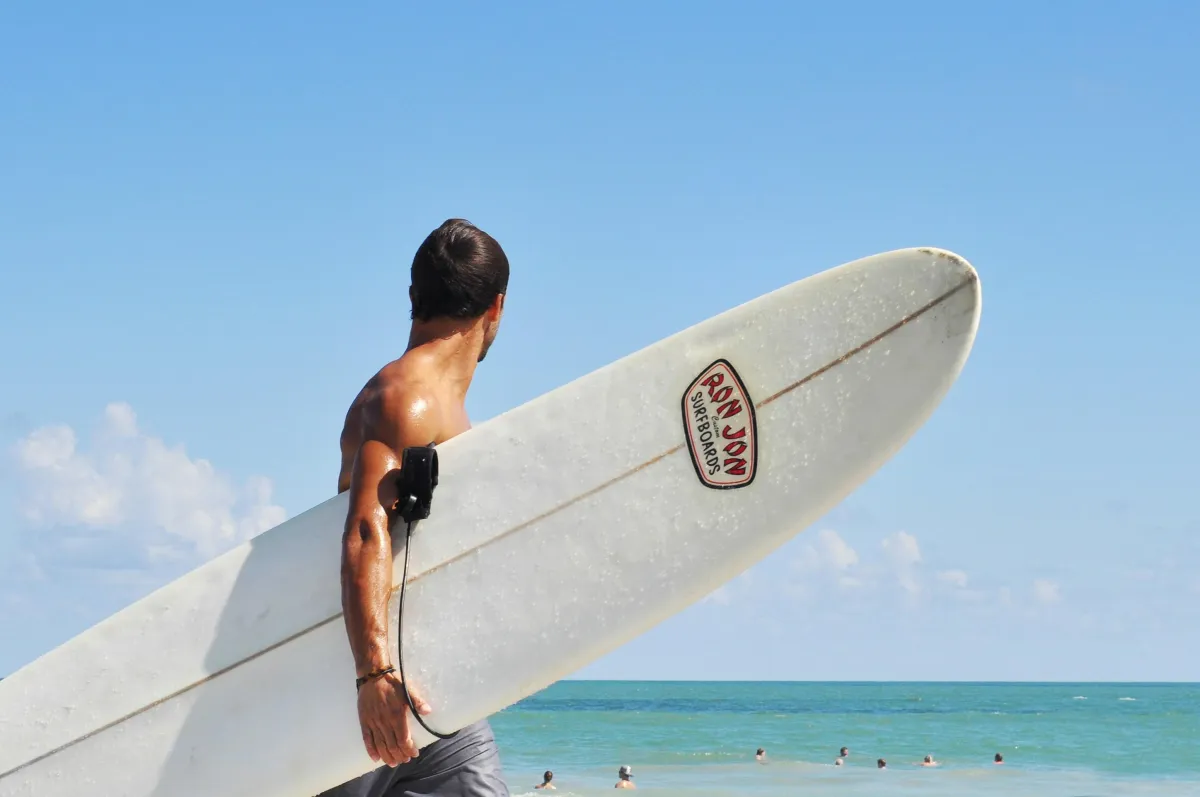
Your Injury is an Opportunity: Why Most Surf Injuries Are Preventable (And What to Do When They Happen)
The uncomfortable truth about surf injuries—and why ignoring them guarantees they’ll return
Here’s a stat that might surprise you:
Surfers experience 6.6 injuries per 1,000 surf sessions.
Compare that to:
Basketball: 9.9 injuries per 1,000 exposures
Soccer: 8.6 injuries per 1,000 exposures
Running: 2.5–12.1 injuries per 1,000 hours
Surfing falls somewhere in the middle. But here’s what the stats don’t say: most surf injuries are entirely preventable.
And when they do happen, they’re not setbacks — they’re opportunities.
Where Surfers Get Hurt
Research shows the most common surf injury sites:
Head / Neck / Face (37%)
Cause: Board impact, seafloor contact
Root issue: Poor spatial awareness, weak neck muscles
Shoulders (22%)
Cause: Overuse from paddling
Root issue: Muscle imbalances, poor endurance
Lower Back (15%)
Cause: Extended arching while paddling
Root issue: Core instability, hip mobility restrictions
Skin Lacerations (46% of acute injuries)
Cause: Board or reef contact
Root issue: Poor body control, insufficient strength
Ankle / Foot (8%)
Cause: Awkward landings, reef contact
Root issue: Weak stabilisers, poor proprioception
Every injury has an underlying physical limitation.
The Aerial Revolution: A New Risk
A growing number of recreational surfers are attempting aerials. Social media makes them look easy, but they still require elite-level strength and control.
Aerial maneuvers now cause 11.8% of surf injuries — and that number is rising.
Common aerial-related injuries:
Ankle sprains
Knee injuries
Shoulder dislocations
Spinal compression
Why they happen:
Inadequate strength for landings
Poor rotation control
Weak reactive strength
Lack of proprioception
The Uncomfortable Truth
Injuries happen because your body wasn’t ready.
Shoulder pain? → Weak rotator cuff.
Lower back pain? → Core can’t stabilise.
Rolled ankle? → Weak proprioception.
Knee injury on landing? → Poor mechanics + weak tendons.
This isn’t about blame — it’s about honesty.
What Other Athletes Do Differently
Athletes in other sports don’t just “accept” injuries:
Basketball players train landing mechanics.
Gymnasts build strength before trying skills.
Runners strengthen calves and adjust training loads.
Tennis players condition shoulders.
Surfers?
We paddle harder and hope for the best.
Proven facts:
Strength training reduces injury risk by 66%
A 10% increase in strength work = 4% less injury risk
More strength = fewer injuries
The Tendon Gap: Where It All Goes Wrong
Tendons adapt slower than muscles.
This creates a danger zone:
Muscles get strong quickly
Tendons lag behind
You feel "ready"
Injury occurs
Common results: Achilles strains, shoulder pain, back injuries.
Other athletes do tendon-specific training. Surfers rarely do.
Injuries Are Information
Instead of ignoring pain, use it:
Shoulder pain? → Work on paddling endurance and scapular stability.
Back pain? → Improve hip mobility and core strength.
Ankle sprains? → Train proprioception and stabilisers.
Knee injury from aerials? → Fix landing mechanics and explosive strength.
Injuries are your roadmap to a stronger body.
Why “It’ll Go Away” Doesn’t Work
Most surfers rest, feel “better,” and go back to surfing.
Then? Injury returns — often worse.
A typical timeline:
Weeks 1–2: Inflammation reduces
Weeks 3–4: You return to surfing
Weeks 5–8: The problem reappears
Rest isn’t rehab. The root cause is still there.
How to Turn Injury into Improvement
Step 1: Understand Why It Happened
Ask:
What movement triggered it?
What was weak or limited?
What needs to improve?
Step 2: Train That Weak Link
Examples:
Shoulder: Rotator cuff endurance, scap stability
Back: Core stability, hip mobility
Ankle: Proprioception, strength
Aerials: Power, mechanics, landing control
Step 3: Progress Gradually
Pain-free range
Slowly increase load
Build tendon tolerance
Ease back into surfing
Step 4: Maintain It
Keep training
Monitor for warning signs
Adjust as needed
Build Antifragility — Not Just Recovery
Proper strength training:
Increases tendon resilience
Improves movement quality
Enhances body awareness
Boosts session stamina
This gives you:
Stronger shoulders
A resilient core
Responsive ankles
Safer landings
A body that adapts — not breaks
Thinking of Doing Aerials? Train for It First
Aerial Preparation: 12–18 Weeks
Phase 1: Foundation (4–6 weeks)
Squats, single-leg work
Core stability
Balance training
Phase 2: Power (4–6 weeks)
Jump squats, plyos
Rotational drills
Landing technique
Phase 3: Aerial-Specific (4–6 weeks)
Depth jumps
Rotational jumps
Board-specific balance
Gradual air progression
Time: Prevention vs Rehab
Prevention:
2 x 45 min weekly
Total: 90 minutes
Outcome: Stronger, injury-resistant surfer
Injury:
2–6 weeks out of water
8–12 weeks rehab
Repeat visits
Risk of recurrence
The Bonus: Better Performance
What prevents injury also boosts your surf performance:
Stronger shoulders → More paddle power
Stable core → Better turns + control
Better proprioception → Sharper balance
More capacity → Longer sessions
Landing mechanics → Safer, smoother airs
What You Can Do Today
If you’re injured:
Identify the root cause
Rehab the weak link
Strengthen systematically
Return slowly
If you’re healthy:
Start training NOW
Focus on shoulders, core, ankles
Build up slowly
Stay consistent
Want to do aerials?
Follow the prep protocol
Master land drills
Progress slowly
Stay strong
Victim or Opportunity? You Choose.
Victim Mindset:
Injuries “just happen”
Hope it heals
Return without change
Decline with age
Stuck in the injury cycle
Opportunity Mindset:
Injuries show you what to fix
You train smarter
You build resilience
You perform better
You surf longer and stronger
Start Building the Body Your Surfing Deserves
At Surf Performance Systems, we’ve spent 15+ years helping surfers turn injuries into breakthroughs through smart strength training.
Stop accepting injuries. Start building resilience.